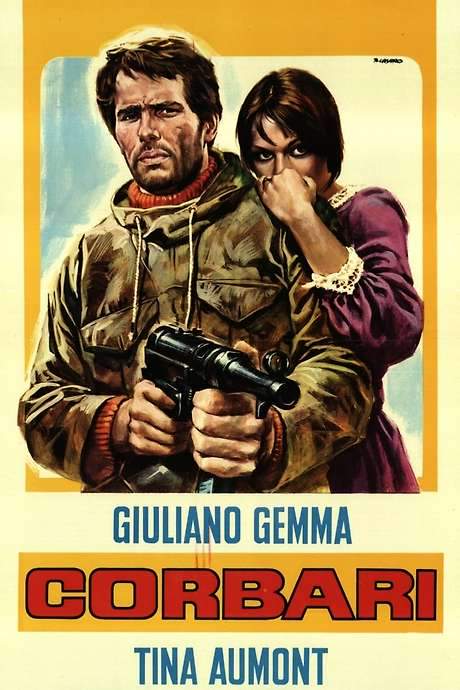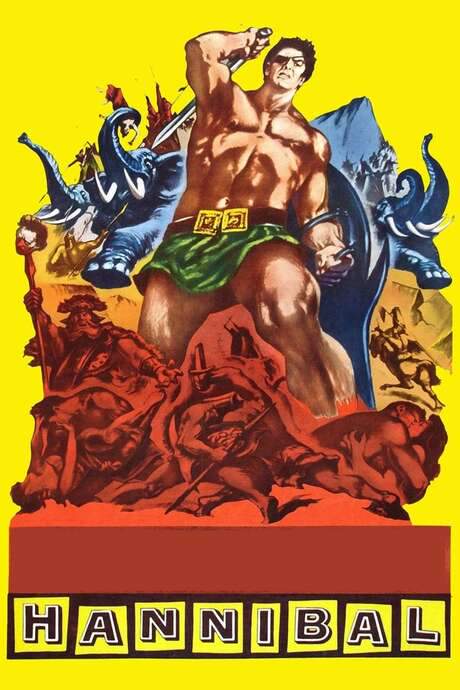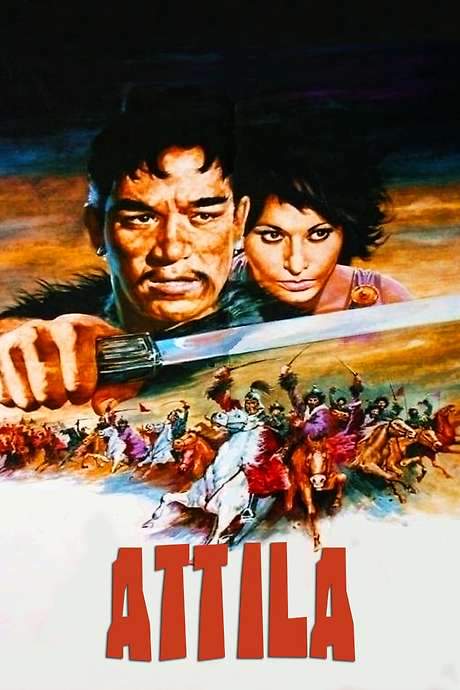
Barbarossa
Year: 2009
Runtime: 139 mins
Language: English
Director: Renzo Martinelli
In 1100 Italy, the German emperor Frederick Barbarossa rules the northern territories and dreams of extending his power southward to recreate Charlemagne’s empire. Opposing him, Milanese youth leader Alberto da Giussano gathers a “Company of Death” of 900 men from across the north, vowing to drive out the emperor and restore freedom to their lands.
Warning: spoilers below!
Haven’t seen Barbarossa yet? This summary contains major spoilers. Bookmark the page, watch the movie, and come back for the full breakdown. If you're ready, scroll on and relive the story!
Barbarossa (2009) – Full Plot Summary & Ending Explained
Read the complete plot breakdown of Barbarossa (2009), including all key story events, major twists, and the ending explained in detail. Discover what really happened—and what it all means.
Italy, 12th century. Northern Italy lies under the shadow of a German Emperor, the fierce Frederick I Hohenstaufen, better known as Barbarossa, Rutger Hauer. His grand aim is to reclaim and extend Charlemagne’s old empire, sweeping through Central and Southern Italy to unify the realm under a single rule. Yet in the north, a rival dream takes shape from the heart of Milan: a bold young leader named Alberto da Giussano, Raz Degan, has forged a formidable band—about 900 young men from different cities—into a loose, fearless force that longs to throw off foreign domination and restore freedom to Lombardy. This is the seed of a resistance that will test empires and shape a legend.
Barbarossa’s world expands further when, during a hunt, the Emperor is saved by a mysterious boy who introduces himself as Alberto da Giussano. In gratitude, Barbarossa gifts the youth an imperial dagger engraved with his own name, a symbol of the bond and the burden that will bind their fates together. A few years later, in Würzburg, the great seer Hildegard von Bingen, Ángela Molina, prophesies a troubling destiny: Frederick’s name will endure in memory for centuries, but a warning echoes through the lines of fate—the scythe that will bring defeat and water that will herald his death.
Back in Milan, the story widens as young Evandro, Ștefan Velniciuc, urges Alberto into action. The pair load goods onto a boat at the river, pursued by Lodigiani soldiers who claim the merchants must pay tolls for crossing their lands. In a brutal clash, Evandro slashes a soldier’s throat, and Alberto and his companions fight their way home, though Alberto is wounded in the fray. At home, two sisters—Tessa and Eleonora—offer a fragile calm, their faces bright with danger and desire as Eleonora, the brunette sister, steals a quick kiss from Alberto while he is still recovering.
Across the way, Milan’s leadership is tested. Two emissaries from Lodi arrive to plead for Barbarossa’s aid against the growing Milanese leverage, and a German emissary comes bearing a letter that names the Emperor’s will. But Milan’s cleric Gerardo—bold, even reckless—tramples the letter beneath his foot, and his ally Siniscalco Barozzi, F. Murray Abraham, is forced into a delicate game of loyalty and manipulation. Barozzi, clever and calculating, pushes Milan toward resistance even as the Emperor shows restraint—yet that restraint frays as Barozzi sees a city that may not bend.
The siege begins to take shape along the Adige River in Verona, where the Germans construct a new bridge and push their war machines forward. The Milanese respond with stubborn tenacity, and Barbarossa, angered by Verona’s boldness and Brescia’s brutal ruin, begins to assert his will with a hard hand. Eleonora, the sister of Alberto’s ally and love interest, becomes a point of tension as Barozzi’s schemes stir distrust and a dangerous love triangle begins to form around Tessa, a young woman whose future is glimpsed by the dagger she never wields. When Barozzi tries to press his claim to Tessa, she recoils from his cynical appetite for power, hinting at the precarious lines that will test both love and loyalty.
The siege intensifies. Alberto volunteers for dangerous tasks when Barozzi orders food sorties for Milan’s people; Barozzi dons a cruel calculus, exploiting the volunteers’ lives to sharpen his own grip on power. In a brutal moment, Barozzi uses a crossbow to strike down Ranero, Alberto’s own brother, a betrayal that steels Alberto’s resolve and sets in motion a vow of vengeance that will shape the war to come. After a night of grief, Alberto infiltrates Barbarossa’s camp and encounters the Emperor himself, who recognizes the gift of the dagger and, for a moment, offers a chance at mercy. Yet the war drums march onward, and Alberto returns to his father as the gates of Milan begin to bleed under pressure.
In Rome, Barbarossa, now crowned Emperor, faces the precarious blessing of a new papacy and the precarious plague that shadows his triumph. The Empress fears the mutability of loyalty and life in a city wracked by disease, while Eleonora—having survived a brutal era and formed a deeper bond with Alberto—begins to see a future beyond survival: a Lombard alliance that might stand against the Reich. In the mountains and monasteries of Lombardy, Alberto and his friends rally the towns, calling themselves the Company of Death and proclaiming their creed: “Death or freedom.” Eleonora becomes a symbol of resilience and the pair’s relationship deepens, even as Barozzi’s grip pulls at the threads of trust.
With a growing chorus of Lombard towns—Parma, Cremona, Padua, Ferrara—joining the resistance, Alberto travels to the Pontida Monastery to rally a united front. The once-fractured Lombard League now stands as a united force, a coalition that will test Barbarossa’s discipline and the imperial might of a trampling army. Eleonora, who has endured through fire and fear, supports the cause and helps weld the alliance that could finally break the invader’s grip. Tessa’s memory—her courage and brief, luminous presence—haunts the narrative as Alberto battles not just soldiers but the politics of power that Barozzi and others wield with ease.
The fields of Legnano become the crucible for the Lombard resistance. From two miles out, the German army under Barbarossa believes victory is theirs, but the Lombards have learned to fight smarter. The enemy’s cavalry is weakened by new tactics and the terrifying steel of the Lombard lance and spears. Barozzi tries to shatter Alberto by striking at his closest kin; in the clash that follows, Barozzi’s bravado falters as Alberto drives a knife into his throat, ending the treacherous menace and sealing a hard-won victory for Legnano’s defenders. Amid the smoke and dust, Eleonora emerges on the battlefield, wounded but alive, revealing that a substitution saved her life and that Barozzi’s cruelty has not gone unpunished.
In the aftermath, the Lombard victory is tempered by heavy costs and uncertain futures. Eleonora and Alberto’s bond grows stronger, and the Empress’s suspicions about Eleonora’s supposed witchcraft threaten to unravel the fragile peace. The Emperor’s siege tunnels are exposed by rain and flood, forcing Barbarossa to retreat toward Pavia, a retreat that may be as much strategic as fatal. His cousin Henry the Lion appears with a purse of coins instead of troops, signaling a weakening of imperial resolve and a shift in the balance of power. As Barbarossa contemplates a grim retreat, the Empress’s faith in divine protection sends her to demand mercy for Eleonora, a demand Barbarossa refuses, setting up a confrontation between power and mercy that will linger in memory.
On the battlefield and in the camp, Alberto’s voice becomes the organizing force behind a broader resistance. He molds reluctant towns into a single, stubborn front—an army that will stand against the Emperor’s oppression. The Lombard League’s revival culminates in Legnano’s triumph, a symbolic turning point that promises freedom to Milan and to the Lombard cities that have endured the Emperor’s rule. The war’s narrative closes with a solemn epilogue: Barbarossa reappears briefly at Pavia, then vanishes into legend, while fourteen years later he meets his fate on a distant riverbank in Anatolia, felled by a serpent’s bite. The final text confirms that Alberto da Giussano lived a long life with Eleonora, that the Company of Death dissolved, and that the Lombard towns ultimately won their freedom through unity and courage.
Last Updated: October 05, 2025 at 11:51
Unlock the Full Story of Barbarossa
Don't stop at just watching — explore Barbarossa in full detail. From the complete plot summary and scene-by-scene timeline to character breakdowns, thematic analysis, and a deep dive into the ending — every page helps you truly understand what Barbarossa is all about. Plus, discover what's next after the movie.
Barbarossa Timeline
Track the full timeline of Barbarossa with every major event arranged chronologically. Perfect for decoding non-linear storytelling, flashbacks, or parallel narratives with a clear scene-by-scene breakdown.

Characters, Settings & Themes in Barbarossa
Discover the characters, locations, and core themes that shape Barbarossa. Get insights into symbolic elements, setting significance, and deeper narrative meaning — ideal for thematic analysis and movie breakdowns.

Similar Movies to Barbarossa
Discover movies like Barbarossa that share similar genres, themes, and storytelling elements. Whether you’re drawn to the atmosphere, character arcs, or plot structure, these curated recommendations will help you explore more films you’ll love.
Explore More About Movie Barbarossa
Barbarossa (2009) Scene-by-Scene Movie Timeline
Barbarossa (2009) Movie Characters, Themes & Settings
Barbarossa (2009) Spoiler-Free Summary & Key Flow
Movies Like Barbarossa – Similar Titles You’ll Enjoy
I Do Not Care If We Go Down in History as Barbarians (2019) Movie Recap & Themes
1900 (1977) Detailed Story Recap
Barbarosa (1982) Complete Plot Breakdown
Waiting for the Barbarians (2019) Story Summary & Characters
The Profession of Arms (2001) Plot Summary & Ending Explained
Barbarian (2003) Plot Summary & Ending Explained
Barbarian Queen (1985) Full Movie Breakdown
Corbari (1970) Film Overview & Timeline
The Barbarians (1960) Plot Summary & Ending Explained
Massacre in the Black Forest (1967) Story Summary & Characters
The Barbarian (1933) Story Summary & Characters
Hannibal (1959) Movie Recap & Themes
General Della Rovere (1959) Detailed Story Recap
Attila (1954) Plot Summary & Ending Explained
The Flame and the Arrow (1950) Spoiler-Packed Plot Recap

















